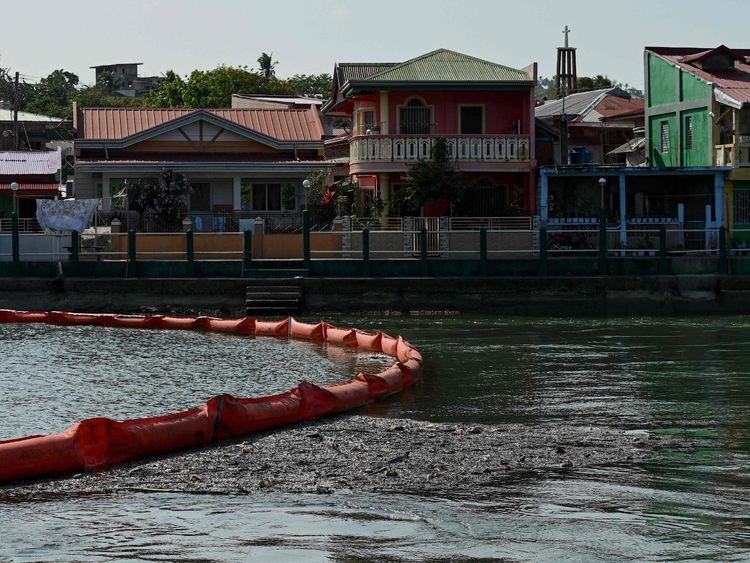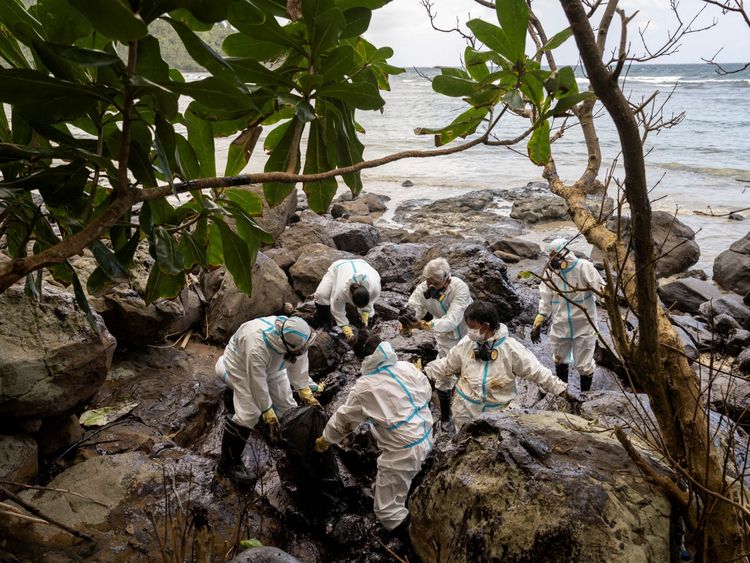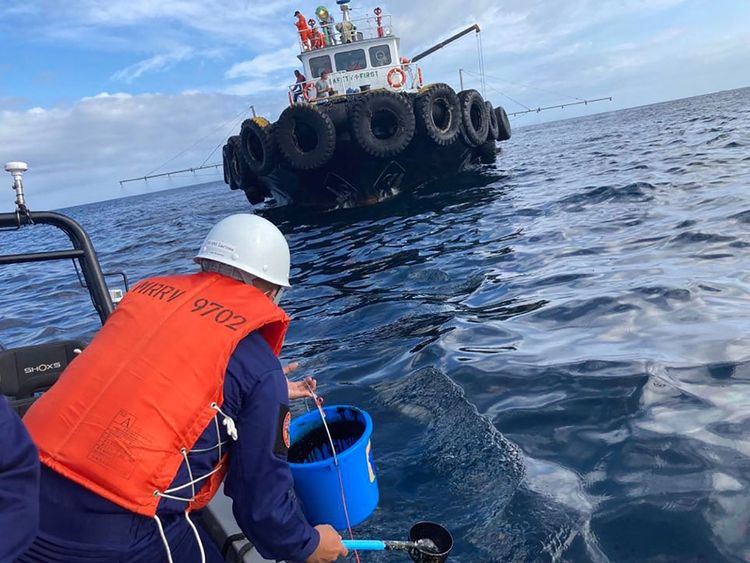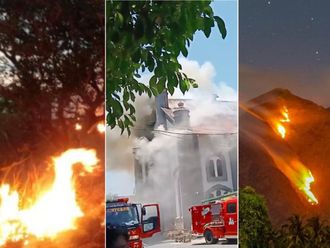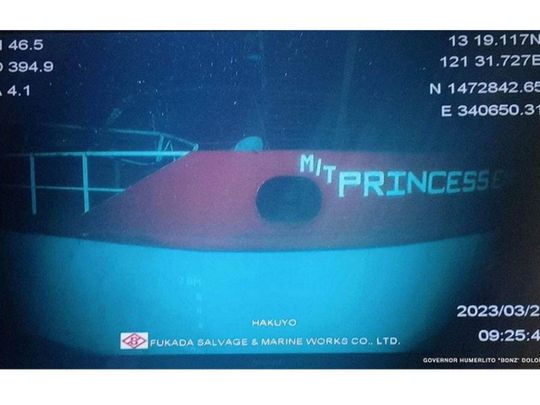
Manila: The ill-fated oil tanker MT Princess Empress that recently sank off in central Philippines was finally spotted on Tuesday (March 21, 2022) on the sea floor off Mindoro island with the help of a remotely operated vehicle (ROV).
The tanker was located at a depth of about 400 metres, 7.5 nautical miles from Balingawan Point, facing Pola town. The oil spill threatens the ecosystem in Oriental Mindoro and neighbouring provinces.
What you need to know:
What happened?
On February 28, 2023, the tanker MT Princess Empress was carrying industrial oil (also known as “black oil”) when it sank near the coastal town of Naujan, Oriental Mindoro, in central Philippines.
Following the disaster, hundreds of coastal villages across nine Oriental Mindoro towns were placed under a “state of calamity”.
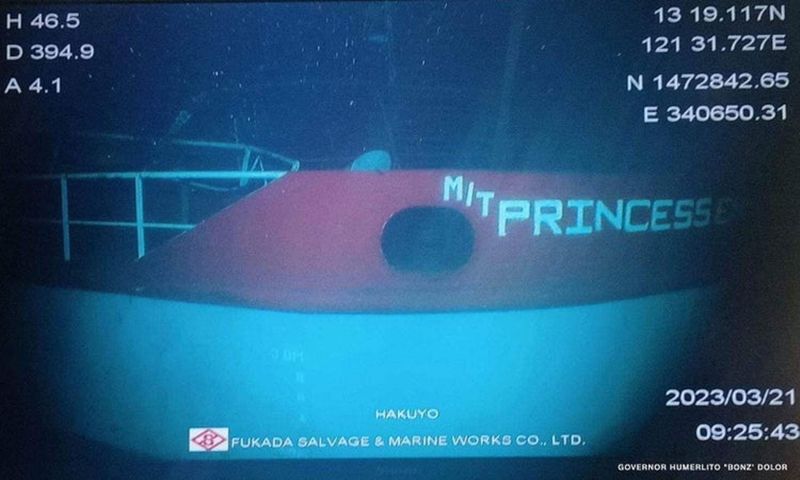
What is the quantity of oil spilled?
The Philippine Coast Guard (PCG) said that it was carrying 900,000 gallons of industrial fuel oil (not 800,000 gallons, as earlier reported).
What caused the sinking and subsequent spill?
The ship reportedly encountered “engine trouble” and then sank in bad weather off Naujan, Oriental Mindoro.
Philippine authorities said the owners had been informed about gale warnings on February 27 before sailing. On the midnight of February 28, the owners were again told that it would be difficult to sail as the waters were turbulent.
Who owns the tanker?
MT Princess Empress is owned by RDC Reield Marine Service. Manila-based online news site Rappler reported that the tanker is owned by the Cabial family, with main offices in Mandaluyong, City, Manila.
What is the extent of the damage?
As of Monday (March 20, 2023), Philippine authorities reported the following:
- The oil spill has affected over 150,000 individuals or 32,000 families.
- Nine out of the Mindoro Oriental province’s 15 municipalities are affected.
- Php128 million ($2.5 million) worth of livelihood for the fishermen — those involved in fisheries or aquaculture — had been lost so far, according to the government.
- About 591 hectares of coral reefs, 1,626 hectares of mangroves, and 362 hectares of seagrass or seaweeds could be potentially affected by the effects of the oil spill, according to the Department of Environment and Natural Resource (DENR).
- Sludge from the MT Princess Empress had reportedly reached the shores of Pola and Pinamalayan in Oriental Mindoro.
- The spill also poses public health risk and contaminate food sources, affecting the delicate food cycle that includes sources for human consumption.
- On Tuesday (March 21, 2023), the presidential palace said the spill has also reached other provinces in the regions of Mimaropa and Western Visayas.
What help do affected families get?
The Department of Social Welfare and Development (DSWD) is now undertaking a 45-day "cash-for-work" initiative involving 7,198 households (including off-site) that began on March 6 and will run through May of this year.
Beneficiaries may also get an Emergency Cash Transfer (ECT) and family food packets (FFPs).
The Department of Labor and Employment (DOLE) has launched the Tulong Panghanapbuhay sa Ating Disadvantaged/Displaced Workers (TUPAD) Program in three Caluya municipalities: Sibolo (152), Semirara (246), and Tinogboc (66), through a 30-day employment program.
A private contractor for the oil spill clean-up is hiring 100 local workers to help the community.
What's the controversy surrounding the tanker?
#1. Seaworthiness of old ship questioned
MT Princess Empress was not a new ship, though there were claims that it was a new vessel, according to a senior government official. On Thursday, Philippine Justice Secretary Jesus Crispin Remulla said that the ill-fated tanker was so old that it had already been scrapped.
The secretary has said the government they are now looking to file both criminal and civil cases in connection with the sinking of the tanker.
“The utterances after the occurrence of the fact, what was told tothe Coast Guard — that the ship was ‘brand new’, there appears to be an intent to deceive from very start. We have to look closely into this,” Remulla said.
The owner of the MT Princess Empress, RDC Reield Marine Services Incorporated, denied that the ship was 50 years old.
#2. Weather warning ignored
The owner, however, declined to comment on the charges that the ship was constructed to carry sand and that the ship ignored weather bureau Pagasa’s gale warnings.
#3. Counterfeit certificate
Philippine media reported that the tanker had sailed at least nine times before it sank off the Mindoro island. Philippine authorities had said that the oil tanker did not have a permit to sail. More importantly, the ship reportedly had not obtained a permit to sail from Philippine maritime authorities.
On Monday, the director of the National Capital Region's Maritime Industry Authority (Marina) denied signing a revised Certificate of Public Convenience (CPC) for the MT Princess Empress.
Marina-NCR regional director Marc Pascua also told local media that the copy of the CPC released by the Philippine Coast Guard was "fake".
According to PCG spokesperson Rear Admiral Armando Balilo, the ill-fated MT Princess Empress was allowed to sail after its CPC was filed to the coast guard on February 27.
How long would it take for the clean-up to be completed?
The Philippine government aims to finish the oil spill cleanup within four months or less.
Recent oil spills in the Philippines:
1999 — Manila Bay oil spill
On March 19, 1999, oil tanker Sea Brothers I capsized and sank after hitting a breakwater (wall that absorbs big waves, in Manila Bay). A total of 85 tonnes of bunker fuel escaped into the water. Divers repaired the vessel's leaks, and it was refloated on April 19, 1999, a month later. The Philippine Coast Guard (PCG) took charge the clean up, using chemical dispersants.
2001 — Cavite oil spill
An oil pipeline in Carmona, Cavite, exploded, damaging a 6km section of the Carmona River and threatening to flow into Laguna Bay. The National Disaster Coordination Council then used oil spill containment booms, or barriers that slow down and contain oil spills, to halt the flow into the water.
2005 – Semirara oil spill
On December 18, 2005, a power barge (floating power plant), ran aground near Semirara Island. The gasoline tanks on the barge leaked 235,000 gallons of bunker fuel, affecting around 100 hectares of mangrove trees on the island. Chemical and manual cleanups were finished in 2006. The cost of rehabilitation was projected to be around $2 million.
2006 – Guimaras oil spill
The M/V Solar I was carrying 2.4 million liters of oil to Mindanao when it capsized on the Guimaras coast due to a storm. Only 9,000 liters of water were retrieved from the ship. The leak affected 16 square kilometers of coral, 551 hectares of mangrove, 58 hectares of seaweed, and 824 hectares of fishponds.
2013 – Cebu oil spill
On August 9, 2013, about half a million (500,000) gallons of oil leaked in Manila Bay. The oil tanker MK Makisig was suspected to have caused the spill. PCG workers chose to let the fuel evaporate rather than deploy chemical dispersants, which could further contaminate the water.
2013 – Manila oil spill
On August 16, 2013, the ferry MV St. Thomas Aquinas collided with the cargo ship Sulpicio Express 7. A total of 160,000 gallons of various oils escaped from the ferry ship, affecting 5,000 hectares of mangroves. Local media reported that 91 people were killed in the disaster, while 43 were reported missing.
2013 – Iloilo oil spill
During the onslaught of Typhoon Yolanda on November 8, 2013, 850,000 gallons of bunker fuel leaked from a National Power Corp (Napocor) power barge in Estancia Town, Iloilo. The leak impacted mangroves up to 10 kilometers downstream.
2020 - Iloilo oil spill
An explosion at a power barge in Iloilo City on July 3, 2020, released 48,000 liters of oil, affecting an area of 1,200 square meters. Oil booms were used to keep the spread under control.





